Rhodizite is a rare and intriguing mineral known for its high beryllium content and unique crystal structure. Its name is derived from the Greek word “rhodon,” meaning rose, which is a reference to its characteristic pink to rose-red coloration. Rhodizite is of interest to mineral enthusiasts, geologists, and scientists due to its exceptional properties and scarcity.
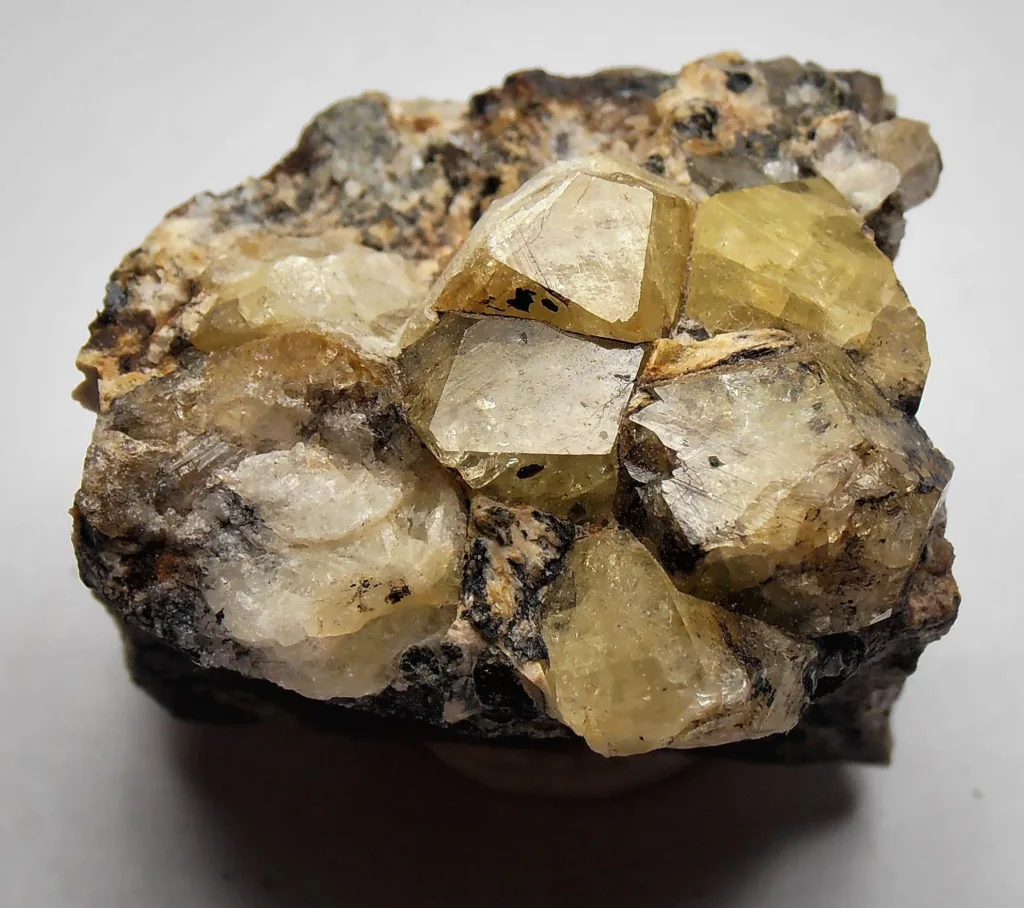
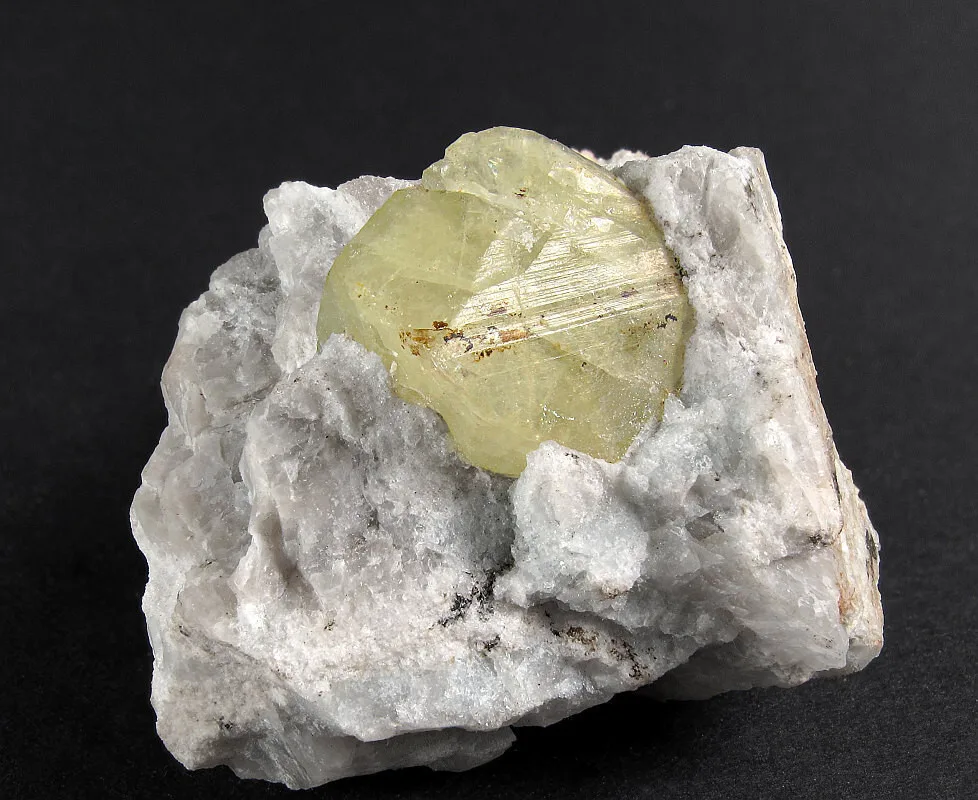
Chemical Composition: Rhodizite is primarily composed of beryllium aluminum borate, with the chemical formula (BeAl)₂Al₆(BO₃)₆. It contains beryllium, aluminum, and boron as its essential elements.
Crystal Structure: Rhodizite crystallizes in the cubic system, forming small, well-defined, and often transparent crystals. These crystals have a cubic habit and can be visually stunning.
Hardness: One of the most remarkable features of rhodizite is its extreme hardness. It ranks among the hardest minerals on the Mohs scale, with a hardness of approximately 7.5 to 8. This exceptional hardness makes it resistant to scratching and breakage.
Lustre: Rhodizite typically exhibits a vitreous or glassy lustre, adding to its visual appeal.
Occurrence: Rhodizite is a relatively rare mineral and is typically found in association with lithium minerals in pegmatite rocks. Notable localities for rhodizite include Madagascar, Brazil, Russia, and other regions with significant pegmatite deposits.
Beryllium Content: Rhodizite is renowned for its high beryllium content. Beryllium is a lightweight and strong metal with applications in various industries, including aerospace, electronics, and nuclear technology. Therefore, rhodizite can be of interest for its potential as a beryllium source.
Gemology: While rhodizite is not commonly used as a gemstone due to its small crystal sizes and rarity, some collectors appreciate its attractive pink to rose-red color and use it in jewelry as a collector’s gem.
Association with Other Minerals: Rhodizite is often found in pegmatite deposits alongside other minerals, such as lepidolite, spodumene, tourmaline, and various borate minerals, adding to its geological significance.
In summary, rhodizite is a fascinating and rare mineral known for its striking pink to rose-red color, exceptional hardness, and high beryllium content. It is highly valued by mineral collectors and is an object of scientific interest due to its unique properties and associations in pegmatite rock formations.
Rhodizite’s Discovery and Formation
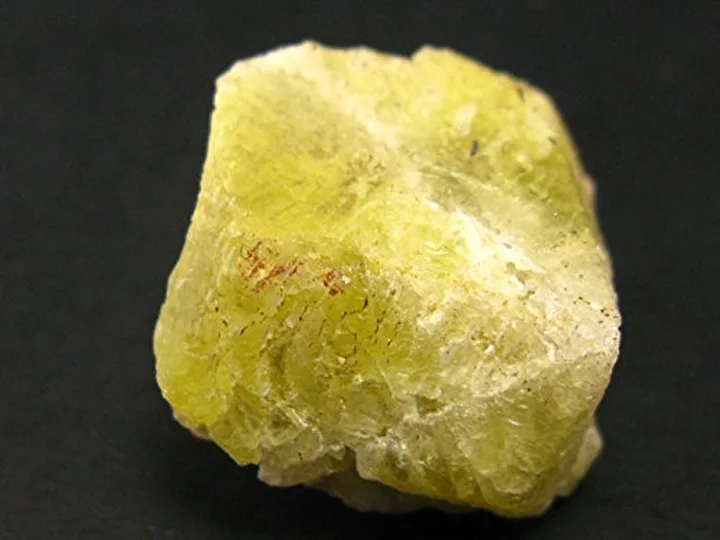
The discovery, formation, and occurrence of rhodizite are closely tied to its geological origins and its relatively rare nature. Here’s an overview of how rhodizite is discovered, formed, and where it can be found:
Discovery: Rhodizite was first described in 1816 by the French mineralogist Armand Lévy. The mineral was initially discovered in the gem-rich region of Madagascar. Its name “rhodizite” was derived from the Greek word “rhodon,” meaning rose, because of its characteristic pink to rose-red coloration.
Formation:
- Pegmatite Formation: Rhodizite primarily forms in pegmatite deposits. Pegmatites are coarse-grained, igneous rocks that often contain an abundance of unusual minerals due to their unique cooling and crystallization conditions. These rocks form when molten magma cools and solidifies in the Earth’s crust. The slow cooling of the magma within pegmatites allows for the growth of large, well-formed crystals, including rhodizite.
- High Beryllium Content: Rhodizite is notable for its high beryllium content. Beryllium is introduced into the crystal structure during the pegmatite’s formation process. The specific geological and chemical conditions in the formation of pegmatites contribute to the incorporation of beryllium and the creation of rhodizite.
Rhodizite is typically sought after by mineral collectors due to its exceptional hardness, striking color, and relative rarity. Additionally, its high beryllium content makes it of interest to those in industries requiring this lightweight and strong metal, such as aerospace and electronics. Its occurrence in pegmatite deposits and association with other valuable minerals often make it an object of geological study.
Physical, Optical and Chemical Properties of Rhodizite
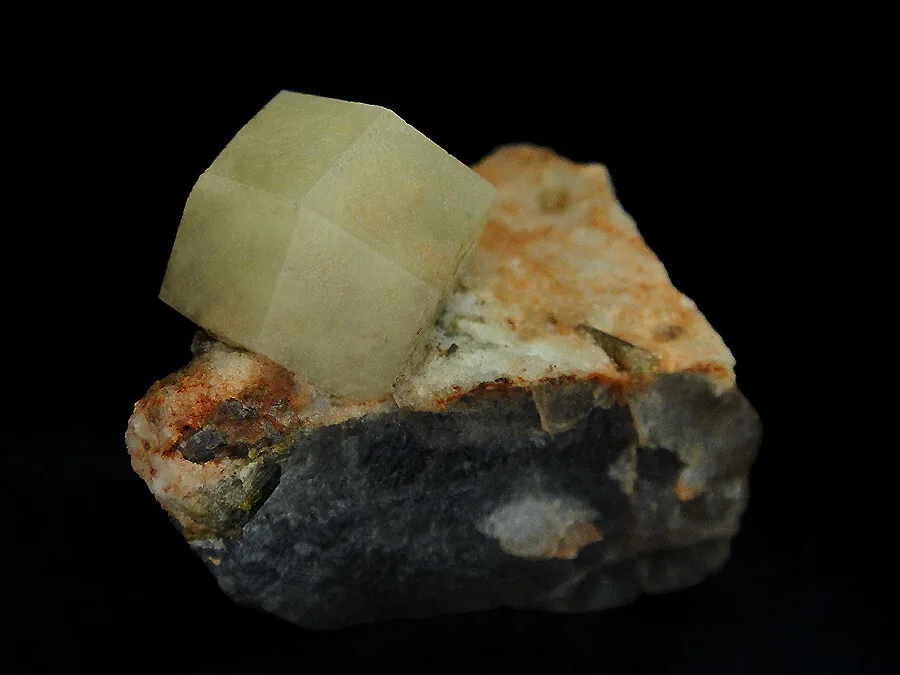
Rhodizite is a mineral with unique physical, optical, and chemical properties, making it distinctive and of interest to mineralogists, gem enthusiasts, and scientists. Here are its key properties:
Physical Properties:
- Color: Rhodizite is renowned for its pink to rose-red color. While this is its most common color, it can also occur in shades of orange, brown, and colorless.
- Luster: It typically displays a vitreous or glassy luster, giving it a shiny and reflective surface.
- Transparency: Rhodizite crystals are often transparent, allowing light to pass through, enhancing their visual appeal.
- Crystal Habit: It crystallizes in the cubic system, forming small, well-formed, and often octahedral crystals. These crystals can be found as individual specimens or clustered together.
- Hardness: One of the most remarkable properties of rhodizite is its extreme hardness. It ranks among the hardest minerals on the Mohs scale, with a hardness of approximately 7.5 to 8. This exceptional hardness makes it highly resistant to scratching and breakage.
- Cleavage: Rhodizite typically exhibits no cleavage, meaning it does not readily break along specific planes.
- Fracture: It shows a conchoidal fracture, which means it breaks with curved, shell-like surfaces.
- Refractive Index: The refractive index of rhodizite is relatively high, typically around 1.68 to 1.71. This property contributes to the mineral’s high brilliance and optical attractiveness.
- Birefringence: Rhodizite is uniaxial positive, meaning it has a single optic axis. This property affects the double refraction of light passing through the crystal.
- Dispersion: The mineral has moderate dispersion, which means it can separate light into its spectral colors, creating flashes of color when properly cut and faceted.
- Pleochroism: Rhodizite may exhibit weak pleochroism, meaning it may show different colors when viewed from different angles, although this property is typically not very pronounced.
Chemical Properties:
- Chemical Formula: The chemical formula of rhodizite is (BeAl)₂Al₆(BO₃)₆, which indicates its composition of beryllium (Be), aluminum (Al), and boron (B).
- Beryllium Content: Rhodizite is known for its high beryllium content. Beryllium is a relatively rare element and is highly valued in various industries for its lightweight and strong properties, making rhodizite of interest as a potential beryllium source.
- Specific Gravity: The specific gravity of rhodizite ranges from approximately 2.95 to 3.01. This measurement compares the density of the mineral to the density of water.
- Streak: When a rhodizite crystal is powdered, it leaves a white streak on a streak plate.
- Solubility: Rhodizite is insoluble in water and most common acids, which is characteristic of beryllium minerals.
In summary, rhodizite possesses a distinctive pink to rose-red color, high hardness, and notable optical properties, making it a unique and valuable mineral. Its chemical composition, with its high beryllium content, adds to its significance both in the world of mineralogy and in various industrial applications.
Locations and Deposits of Rhodizite

Rhodizite is a relatively rare mineral, and it is primarily found in pegmatite deposits in various regions around the world. Notable locations and deposits where rhodizite has been discovered include:
- Madagascar: Madagascar is one of the most renowned sources of rhodizite. It can be found in pegmatite deposits throughout the island, with notable occurrences in regions like Antsira, Sakavalana, and Ambalabe.
- Brazil: Rhodizite has been discovered in pegmatite deposits in Brazil. States like Minas Gerais and São Paulo have produced rhodizite specimens.
- Russia: In Russia, rhodizite has been found in pegmatites in regions including the Urals and Siberia.
- Namibia: There have been reports of rhodizite occurrences in pegmatites in Namibia, particularly in the Erongo and Kunene regions.
- Myanmar (Burma): Myanmar has also yielded some rhodizite specimens from its pegmatite deposits.
- Other Locations: While these are some of the primary locations, rhodizite has been reported in other parts of the world, often in association with lithium-bearing minerals. It can be found in other pegmatite-rich regions, and new occurrences are occasionally discovered.
Association with Other Minerals:
Rhodizite is often found in pegmatite deposits in association with various other minerals, including:
- Lepidolite: Lepidolite is a lithium mica that is commonly found alongside rhodizite in many pegmatite deposits. It often occurs in the same geological context.
- Spodumene: Spodumene is another lithium-bearing mineral that is frequently found alongside rhodizite. Both minerals can occur within the same pegmatite rock.
- Tourmaline: Various types of tourmaline, such as elbaite and schorl, are often found in pegmatites, and they can co-occur with rhodizite.
- Quartz: Quartz is a common mineral in pegmatites, and rhodizite can sometimes be found alongside quartz crystals.
- Beryl: Beryl minerals like aquamarine and emerald are also associated with pegmatite deposits, and rhodizite can occur in the same geological settings.
- Other Borate Minerals: Rhodizite is a borate mineral, and it can be found alongside other borate minerals in pegmatites, further contributing to the geological diversity of these deposits.
These associations are a result of the specific geological conditions that give rise to pegmatite deposits. These conditions allow for the formation and coexistence of a variety of minerals, making pegmatites important sources of rare and valuable minerals for both collectors and industry.
Application and Uses Areas
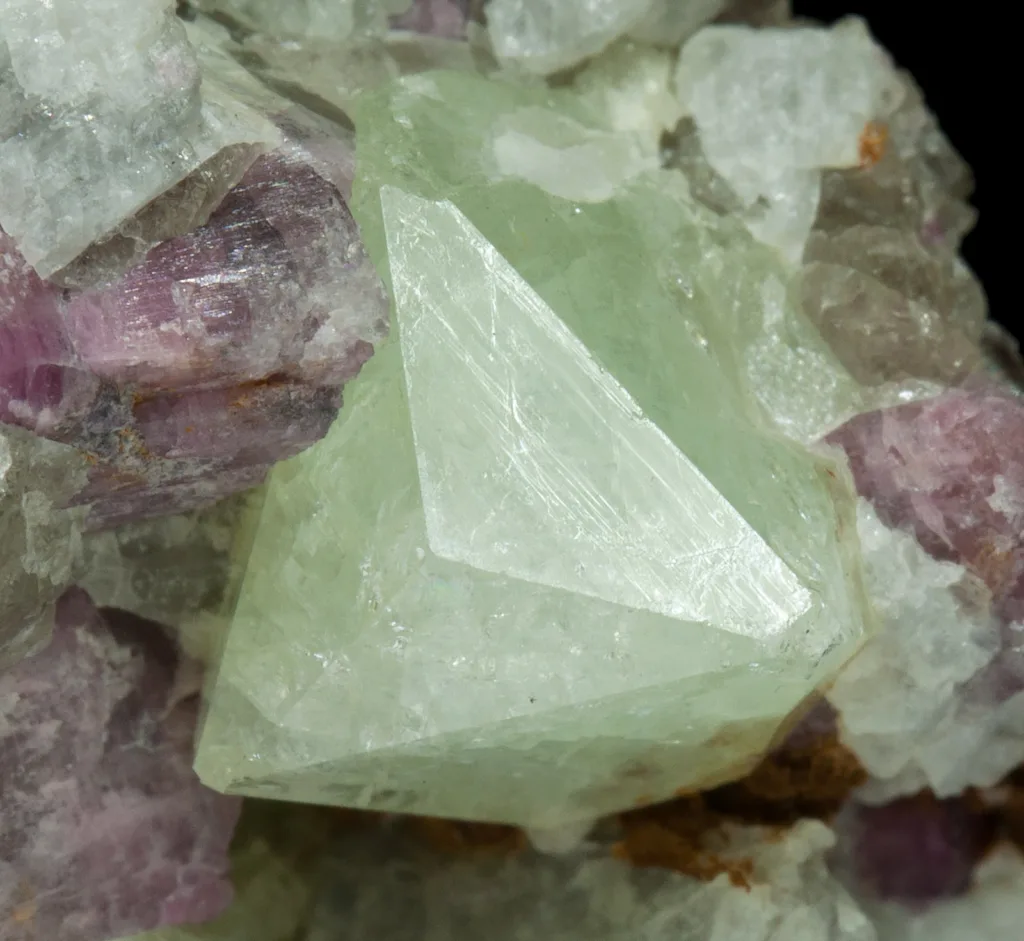
Rhodizite, while relatively rare, has several potential applications and uses due to its unique properties and, most notably, its high beryllium content. Here are some of the potential application areas and uses of rhodizite:
- Beryllium Source: Rhodizite is of particular interest for its high beryllium content. Beryllium is a lightweight and exceptionally strong metal with a range of industrial applications. It is used in aerospace, defense, electronics, and nuclear technology due to its desirable properties. Rhodizite can serve as a potential source of beryllium, which is otherwise relatively scarce in nature.
- Mineral Collecting: Rhodizite’s striking pink to rose-red color, exceptional hardness, and cubic crystal habit make it a desirable mineral specimen for collectors. Its rarity and unique properties contribute to its appeal in the world of mineral collecting.
- Gemstone and Jewelry: Although rhodizite is not a conventional gemstone due to its typically small crystal sizes, it is sometimes cut and used in jewelry as a collector’s gemstone. Its attractive color and transparency can make it a unique addition to jewelry pieces.
- Geological and Scientific Research: Rhodizite’s occurrence in pegmatite deposits and its association with other valuable minerals make it an object of geological study. It provides insights into the mineralogical composition and formation processes of pegmatites.
- Metaphysical and Healing Properties: Some individuals believe in the metaphysical and healing properties of crystals and gemstones, and rhodizite may be used for these purposes by those who ascribe to such beliefs.
It’s important to note that while rhodizite has potential uses, it is not as widely utilized as more common industrial materials due to its scarcity. The demand for beryllium, for instance, is often met through other sources, and rhodizite remains more of a niche interest for collectors and specialists. Additionally, given its high beryllium content, proper handling and processing are necessary to extract and utilize beryllium from rhodizite, which involves complex and specialized procedures.
In summary, rhodizite’s main potential lies in its high beryllium content, but it is primarily valued for its rarity, making it a sought-after mineral specimen and gemstone among collectors and enthusiasts.
Rarity and Economic Value
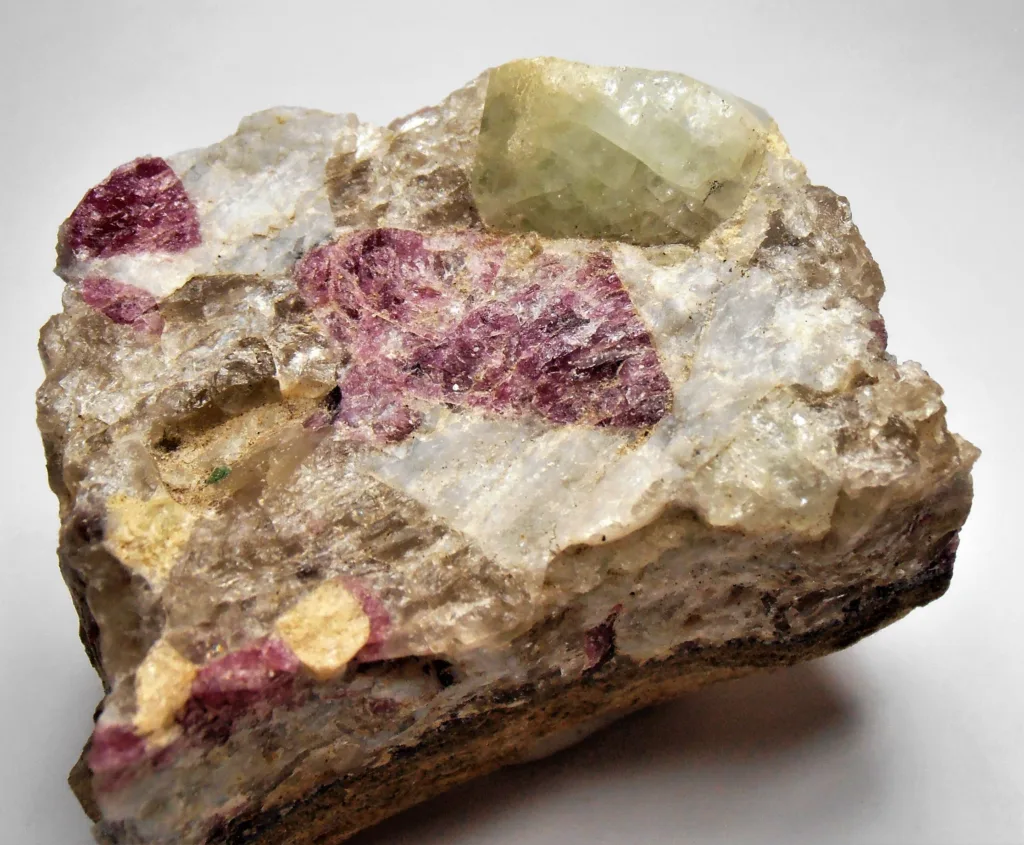
Rhodizite is considered a rare mineral with notable economic value, primarily because of its high beryllium content and unique properties. Here’s a closer look at its rarity and economic value:
Rarity:
- Limited Occurrence: Rhodizite is relatively scarce, and it is not commonly found in large quantities. It is typically associated with specific geological formations, primarily pegmatite deposits, and is not as widespread as more common minerals.
- High Beryllium Content: What makes rhodizite especially unique is its high beryllium content. Beryllium is a relatively rare element in the Earth’s crust, and minerals rich in beryllium, like rhodizite, are even rarer. This rarity adds to the mineral’s overall scarcity.
Economic Value:
- Beryllium Source: Rhodizite is of economic interest due to its potential as a source of beryllium. Beryllium is a lightweight and incredibly strong metal with applications in various industries, including aerospace, defense, electronics, and nuclear technology. The economic value of rhodizite lies in its role as a potential beryllium resource, which can be used in high-tech applications.
- Mineral Collecting: Rhodizite is highly valued among mineral collectors and enthusiasts due to its unique color, extreme hardness, and appealing crystal forms. Collectors are willing to pay a premium for well-preserved rhodizite specimens, contributing to its economic value.
- Gemstone and Jewelry: Although rhodizite is not a traditional gemstone, it may be used in jewelry as a collector’s gem. Its rarity and attractive pink to rose-red color can make it a valuable and unique addition to jewelry pieces, particularly for those who appreciate the uncommon and exotic.
While rhodizite possesses economic value, it’s essential to recognize that the economic significance of this mineral is often niche and context-dependent. Its value primarily arises from its rarity, unique properties, and potential as a source of beryllium. The actual economic value of rhodizite can vary based on factors such as specimen quality, market demand, and the specific applications in which it is used. Furthermore, the extraction and processing of beryllium from rhodizite require specialized knowledge and facilities, which can impact its economic feasibility.
In summary, rhodizite’s rarity and economic value stem from its scarcity, high beryllium content, appeal to collectors, and potential applications in industries that require beryllium’s unique properties.




































